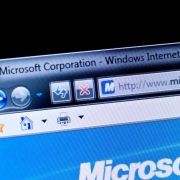Today, Wi-Fi isn’t only crucial for your employees to get work done; it’s also a necessary amenity for your office guests. But there’s a right way and a wrong way to set up guest Wi-Fi, and the latter can result in a frustrating experience for you and your users. So, how do you set up your guest Wi-Fi properly?
Never give guests access to your primary Wi-Fi
Giving your guests access to your company’s main Wi-Fi connection might seem like a good idea, but you should avoid this at all costs.
Anyone with a little technical know-how can potentially access everything on your company network, including confidential data. In addition, if any of your visitors’ mobile devices have been compromised, it’s possible that they can transmit malware to your entire network.
Ways to create secondary Wi-Fi for guests
If your router comes with built-in guest Wi-Fi support (you can check this feature through a quick web search), you can use it to create a separate “virtual” network. This means guests will have access to the internet without directly connecting to your company’s primary network.
If your router doesn’t support multiple Wi-Fi networks, you can implement a separate wireless access point that bypasses the rest of your network and connects directly to the internet, thus preventing any outsider from accessing your company’s private data.
Keep in mind that guest Wi-Fi still uses your ISP connection, so you should limit bandwidth usage on your guest network. Visitors streaming videos can slow down your internet connection, which can affect the productivity of your employees. With that in mind, you can even have your employees use the guest Wi-Fi on their mobile devices to minimize the chance of them hogging company bandwidth for personal use.
Remember, your guest Wi-Fi should only provide outsiders with internet access, nothing more. While the proper setup isn’t rocket science, it can be a tedious process. Having said that, if you need a team of experts to take care of it, or if you simply have questions about how else to leverage your hardware for better efficiency and security, just give us a call.
To learn more about how to safeguard your business, or if you are looking for an expert to help you find the best solutions for your business talk to GCInfotech about a free technology assessment.
Published with consideration from TechAdvisory.org SOURCE




